IMPROVE MY GAME
Articles
Making the Most of Your Offseason: Strength Training to Improve Your Game

If we are being honest with ourselves, it’s after Labor Day and many golfers have spent more time on the course than in the weight room this Summer. In-season should be a time to maintain strength, while building a bit of power and speed. However, oftentimes these areas, especially strength, are neglected. As a result, force production drops off drastically. Not good if you want to maintain or build power.
For any golfer, having the ability to increase force production with less effort will help you move the club faster. It will increase motor unit recruitment which will ultimately lead to more power. Increased strength creates an increased capacity for stability in your system. It also aides in deceleration. You will be better trained to wind up that elastic and explode with much more power! Furthermore, the strength training completed, especially in the off-season, is not only to increase strength but also to improve the body’s ability to increase tension when producing power. Bottom line: More capacity for force production = more capacity for power. We like that!
This is why Fall is a perfect time for transition. Frequency of rounds starts to wind down and this is the perfect time to shift into your off-season training program. With many courses in northern states closing by November to December and not opening until Spring, this creates a period of 12 to 16 weeks to shift our focus to strength/force production. We need anywhere from 3 to 4 days per week and as long as 60-90 minutes per workout. We have the time and there is no fear about tightening up or of the impact strength training might have on our in-season game.
Additionally, if we start putting in the hard work now in the strength room, this will set us up for a smooth transition into power development come late winter to early spring. Let’s get to it!
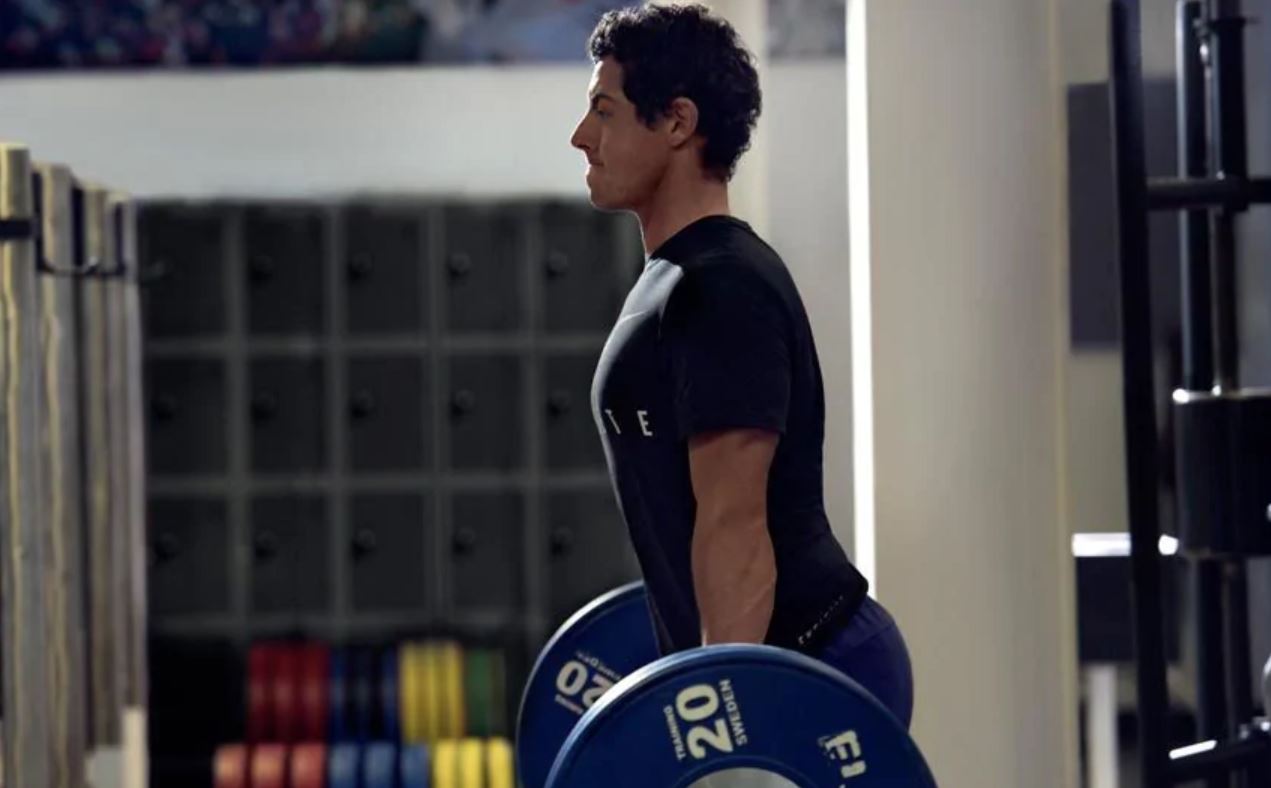
Barbells, dumbbells, kettlebells, bands, chains. We are going to start moving some heavy stuff!
The right strength program highlights and improves on the golfer’s strength deficits, whether these are in the lower-body, upper-body, core or all of the above.
Not knowing where your deficits lie should prompt you to assess. In all likelihood there may have been some drop off in force production over the summer.
I always assess strength for all of my athletes and especially my golfers and my testing has become much more expansive. I follow the TPI protocol assessing upper-body push strength, upper-body pull strength as well as lower-body strength. We do this to help us determine the golfer’s 8 rep maximum (see the norm charts below). This allows me to not only identify deficits in force production/strength and power but will also allow me to identify an athlete’s 1 RM (1 rep maximum).
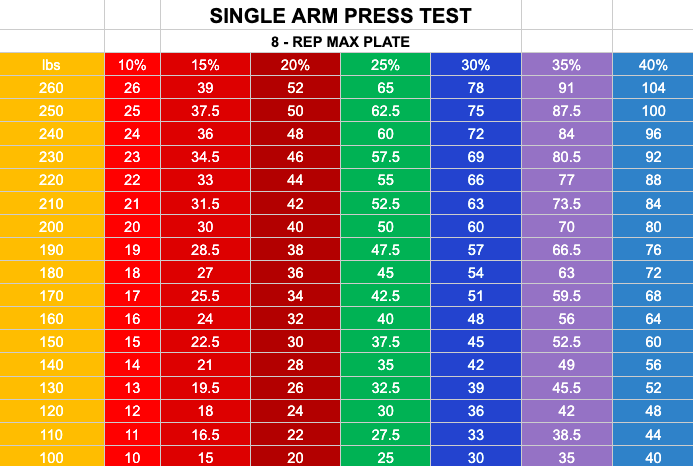
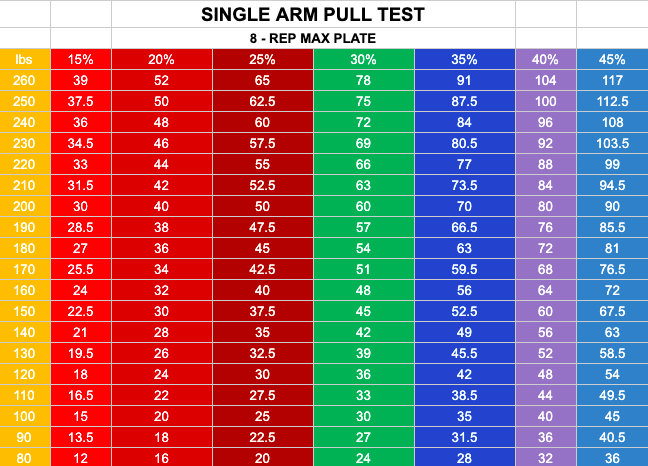
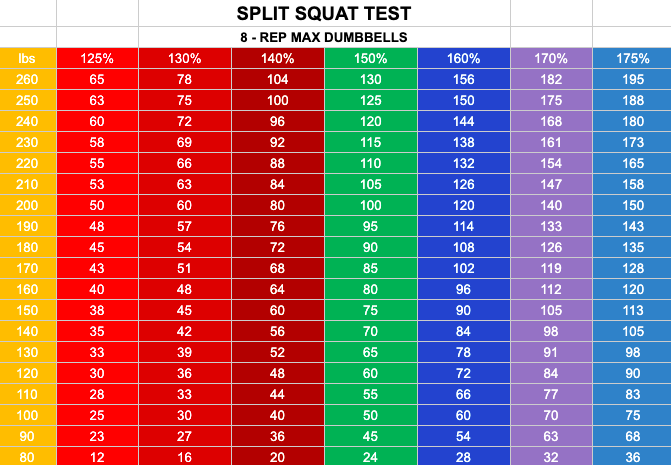
Establishing your 1 RM will allow us to properly program for strength utilizing loads anywhere from 75% to 95% of your 1 RM. There should be no guesswork here. Assess, adjust, program, train and reassess should be a constant cycle. Document everything!
Knowing your 1 RM will allow us to layout phases of training addressing eccentric, isometric and concentric loading. Each of these phases will address issues like deceleration, stabilization, acceleration, velocity and tension building.
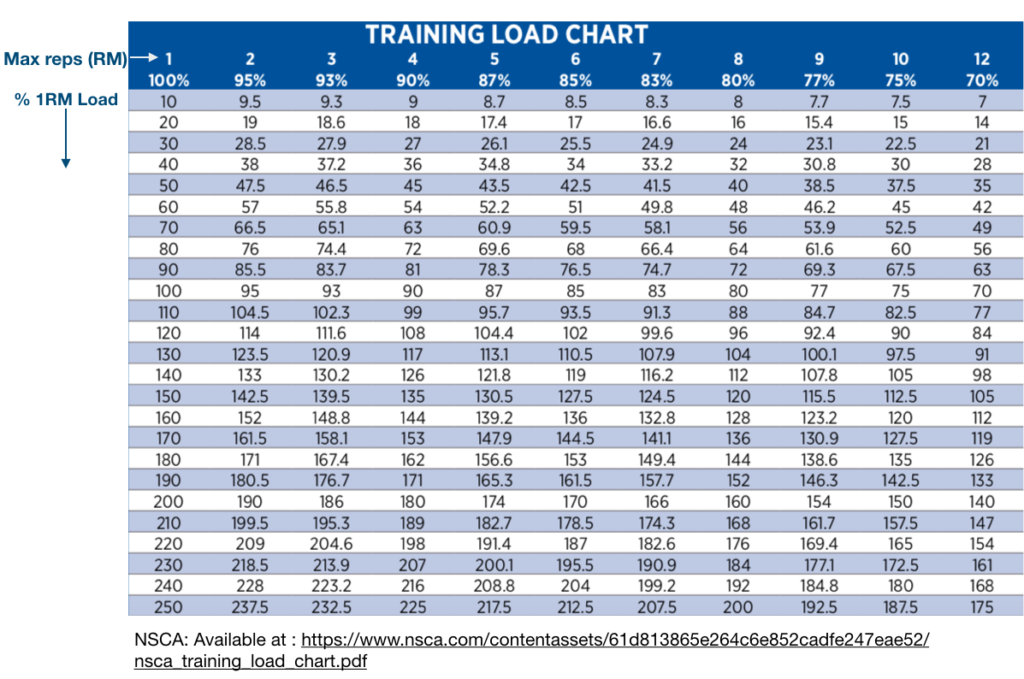
One additional point on assessing strength for golfers. Proper assessments should provide information and direction on phases of movement to place focus on. Do we need to focus on eccentric loading? Don’t guess, test! Or do we need to work on the isometric or concentric phases of movement? More than likely we will cycle through all three. However, assessing can help you determine the length of these training cycles. Each cycle should have emphasis on tempo of movement.
Where to start?
First identify things like joint range of motion, dysfunctional movement patterns and yes strength levels. This will help identify your entry point for exercises as well as loads. Additionally this will establish your corrective exercise strategy to help get you into better and safer positions during your squats, deadlifts, presses and pulls.
If you start thinking about it now, you can put together a strength program which can run as short as 8 weeks and as long as 12 to 16.
I am running my athletes through strength from October and into the new year. Then we transition into pre-season training.
What is your plan?

Paul Gozbekian has been a trainer/coach for over 20 years working extensively with golfers over this time period and has coached players at all levels and ages. Paul has presented at the National Golf Expo each of the last 6 years and has been a regular guest on 98.5 The Sports Hub Golf Club Boston for the past 6 years. Aside from golf, Paul helps clients with varying wants and needs including weight loss, strength training, pain management, prehab/rehab, corrective exercises, endurance training and sport performance. Paul is a seminar junky and loves getting out to learn the next, greatest techniques and cutting edge training methods. He is certified with TPI as Fitness Coach Level 3, Junior Coach Level 3, Power Coach Level 3 and holds minors in Medical Level 3 and Golf Level 2. Additionally he maintains certifications through USAT, USAC, USAW, RRCA, SFMA, FMS, FRC, ACE, NASM and others. Paul lives in Massachusetts with his wife and 6 year old daughter and works with clients at his training space in Watertown, MA as well as online and in-home.. If you would like to contact Paul for training online or in person 1-on-1, you can contact him via his website or on social media at Instagram or Facebook.